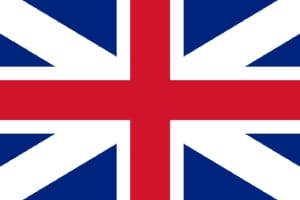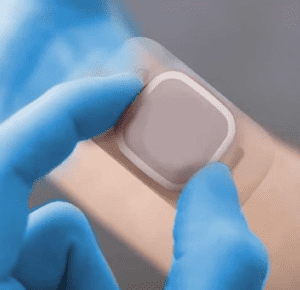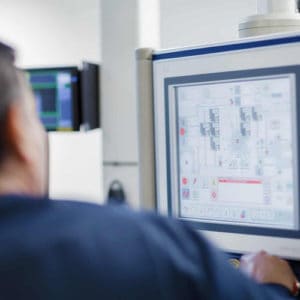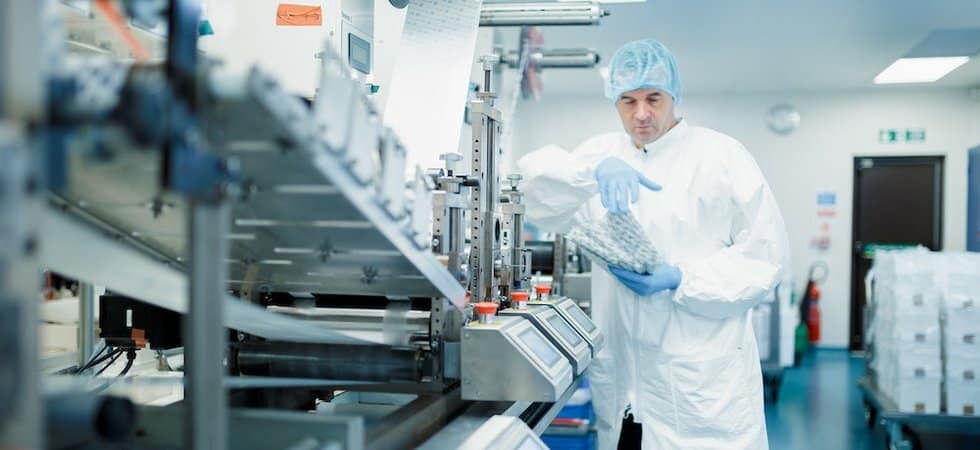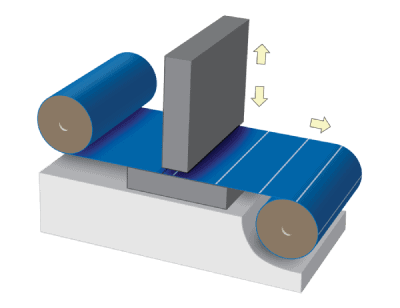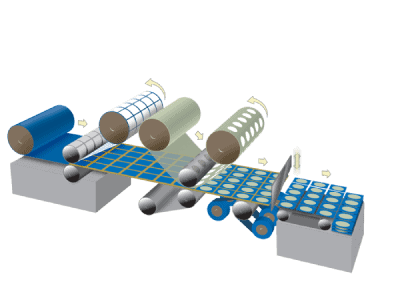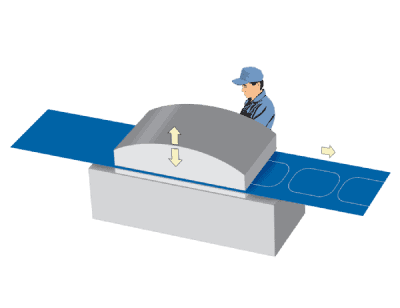Cost is top of mind when clients are looking to flexible material converters to manufacture a die cut device or component to take to market.
The aim is to produce a cost-effective die cut solution with accuracy, efficiency, minimal waste and tight tolerance, using high-quality materials.
Therefore, the design, raw materials, machinery and labour have to be taken into account to accurately estimate the cost of production during the die cutting process.
Let’s unpack the aspects that influence the cost of die cutting and what to expect when getting a quote from a medical converting company.
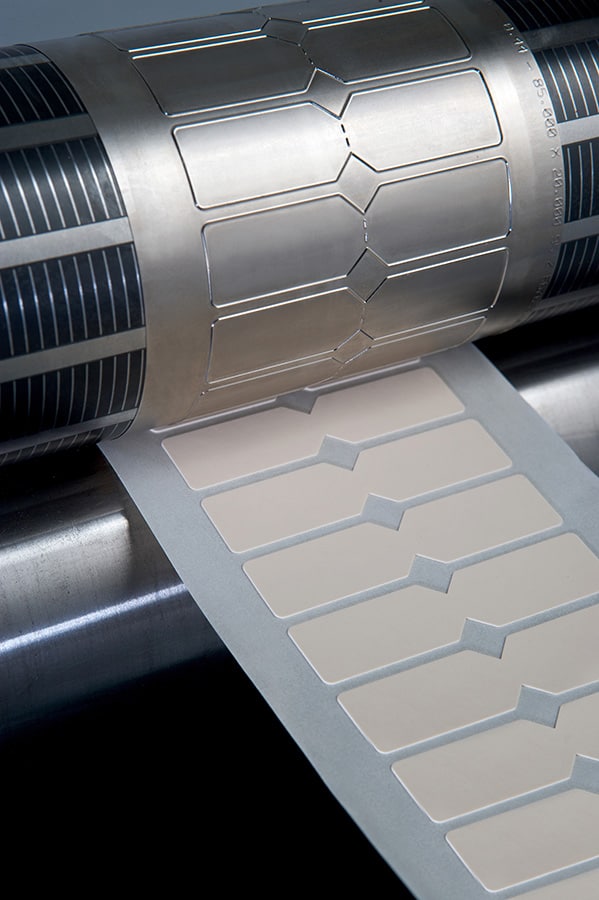
What is die cutting?
Die cutting is a key aspect of medical manufacturing, involving specialised machines and tools to convert different types of medical-grade raw materials into custom shapes.
By cutting, forming and shearing, materials become custom shapes that are used for various medical solutions, including:
There are different types of die cutting machines (including rotary die cutting machines and flatbed machines as well as laser die cutting machines) and cutting methods designed to perform specialised functions and to help a client achieve the desired end-product for their application.
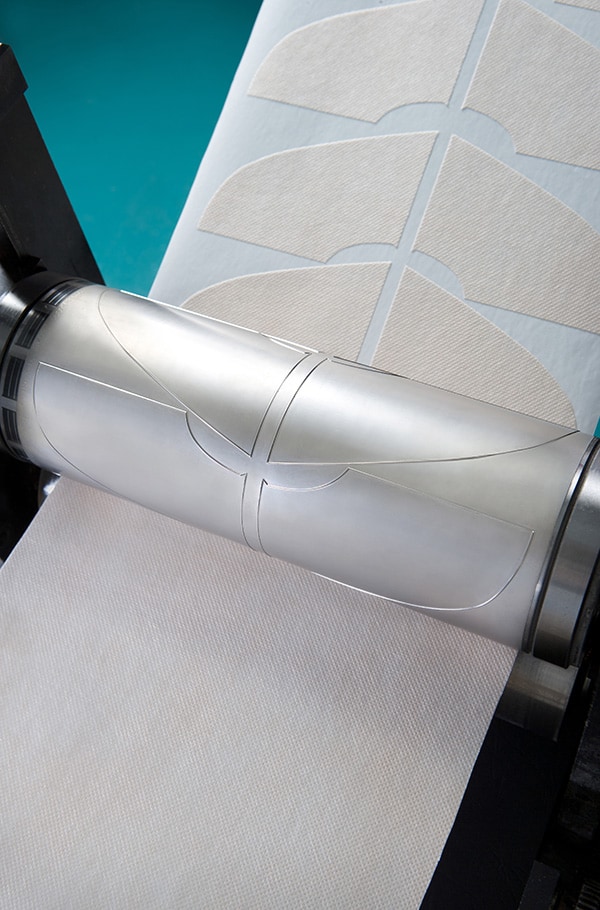
4 Factors that affect the cost of die cutting
The cost of a die cut can be different depending on the requirements of your solution. Sometimes it can seem like medical converters are making up prices, but the cost of this service is dynamic and there are a few main factors that influence the cost of producing a die cut part. These factors include die cut design, material, machinery and configuration options as well as the cost of labour.
Let’s consider how these factors affect the manufacturing process for die cut parts and solutions.
1. Consider the complexity of die cut design & form factor
Die cutting unlocked a range of opportunities when manufacturing medical products, and providing a solution to otherwise expensive ways of producing particular components.
Using die cutting allows you to achieve highly customisable designs, however, a customer should be aware that complex designs with more specific customisations (or requiring multiple tools and configuration options to produce the end product) are going to cost significantly more than more basic designs.
Die cut design affects cost
Consider the Part Geometry of your design which includes a component’s size, shape, functional features, layers and any design intricacies that need to be considered during die-cutting or applying configuration options. The more generic and simple the design, the cheaper the part required will be. Simpler designs are also faster to use, resulting in less set-up time and generally higher up-time with less breakdown time and wasted material. They are also easier to apply to a wider range of different materials.
Additional processing and compositing affects cost
Processing methods can be applied to a die cut press to provide multiple configuration options for your end product. This may involve combining multiple materials, adding layers of lamination or a range of other customisations for the desired end product.
Form factor affects cost
Form factor is another consideration as die cutting machines have size limitations for materials. For example, here are some die cutting machines and their maximum supported dimensions:
- Flatbed machines = maximum die cut size: 250mm x 200mm
- Rotary machines = maximum die cut size: 350mm x 500mm
- Large format machines = maximum die cut size: 1600mm x 800mm
When working with designs of a larger form factor, the type of material used and the quantity become incredibly important considerations in the cost of producing your die cut design.
2. Raw materials can affect the costs of die cutting
The raw material used during converting is a critical component of your pricing considerations as depending on the material sourced, material costs alone can make up the majority (more than 70%) of the cost of producing a die cut product.
When considering the cost of materials you should keep in mind the volume, waste and type of material – which can all contribute to your cost of materials.

Volume of materials for die cutting
In some cases, clients may provide materials that have already been sourced to complete their end product.
More commonly, with an outsourced approach, medical manufacturers/converters work with suppliers to help you source the material required for your solution. Their partnerships with suppliers can be beneficial in securing the right price for raw materials, depending on the type of material and quantity sourced.
Raw materials are more expensive early on in a product’s lifecycle, as larger suppliers usually require a minimum order quantity to fulfil an order. Alternatively, a smaller supplier may be required to provide a lower volume of material at a higher price point initially.
Contact a converting partner to find the best solution for sourcing raw materials.
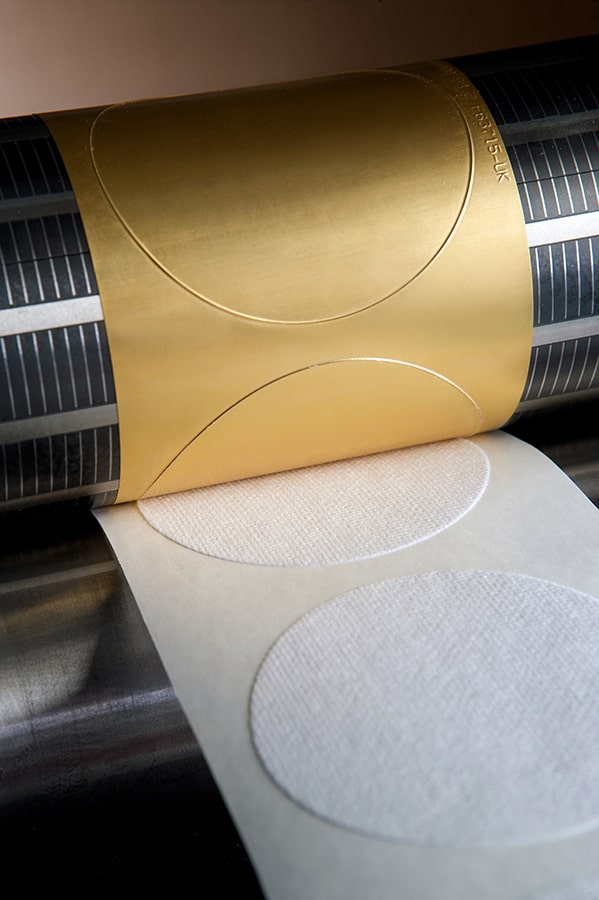
Material waste produced during die cutting processes
Some material waste is inevitable during each production stage, however, the objective is to reduce waste as much as possible. Producing minimal waste allows you to achieve the lowest cost and the most value for material during production.
Type of material
The type of material you source will influence the cost of producing your die cut product/component for a few key reasons.
Firstly, sourcing specialised materials will cost more than sourcing more commonly used materials. Secondly, die cutting and processing of specialised materials may require multiple tools/machines to achieve your desired end product.
Specialised, exceptional quality materials are often required when producing a range of medical components and solutions, however, it’s important to ensure your choice of material isn’t over-engineered for your solution as this would unnecessarily inflate costs.
Seek guidance from a medical manufacturer to help you find a material that is perfect for your product without incurring unnecessary costs.
Next, let’s cover how die cut machinery and tooling affect the cost of producing a die cut.
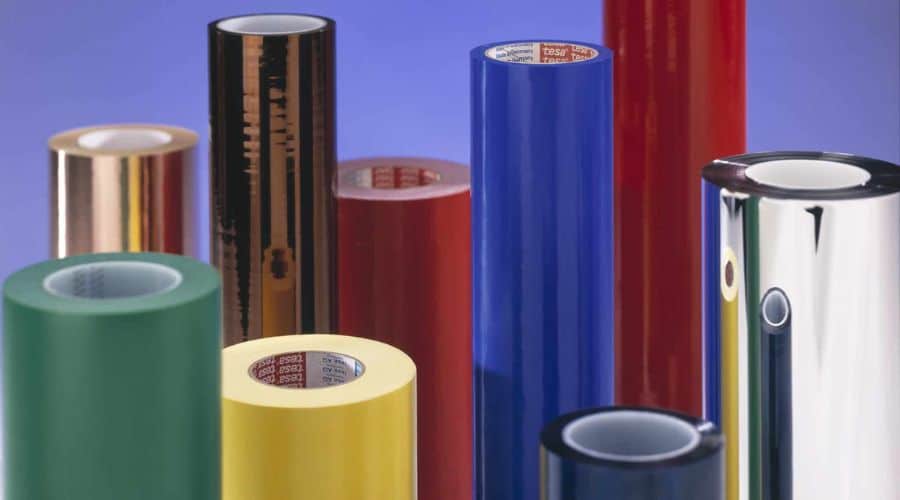
3. Machinery or tooling costs when producing a die cut design
Die cutting requires specialised machines and bespoke methods to produce the ideal die-cut component or product. Die cutting for medical converting is usually outsourced due to the cost of machinery, level of expertise as well as the high precision and efficiency required throughout the production process.
We’ve covered briefly how the design of the die cut and the type of material selected for conversion can affect the kind of machinery required. Let’s cover why these are important considerations that influence tooling costs.
Specialised parts and machinery
Die cutting could be likened to using a specialised cookie cutter to create a custom shape.
Each production job requires a die cutting machine to use a unique die to produce the shape of your part and incorporate other design intricacies.
Part Geometry (covered earlier), needs to be considered very carefully as the design of the die cut you require will influence your selection of die cutting machines and methods for producing an end product.
For example, an advanced die cut design with many intricacies, or involving the use of specialised materials, may require several die cutting tools and methods to create. This can increase the total cost and time during high volume production or when creating a prototype.
The same can be said for configuration options required during processing, which can include lamination, tighter tolerances and more.
A trusted medical manufacturer will help you find a conversion tool and method that provides consistency, accuracy, and efficiency as to improve production costs.
Another key factor to consider is labour costs and their impact on costs when producing a die cut.
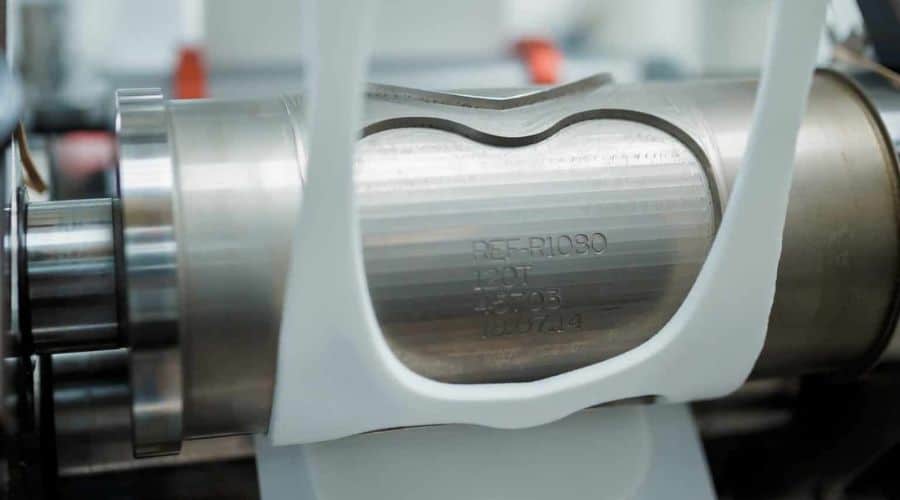
4. Cost of labour required during die cutting processes
The labour process required to produce a die cut takes place in 4 phases: Set-up, testing, run time and breakdown. The cost of labour typically forms a significant portion of the overall cost of production.
Set-up, testing, and breakdown are key phases that incur the most labour cost as they require experienced hands-on operators.
These three phases are also usually charged differently compared to the run-time phase.
Let’s cover how each phase of the die cutting process influences the cost of the labour required.
Set-up, testing and breakdown
Set-up, including pre-assembly, of die cutting machines, is often the most time-consuming aspect of the die cutting process.
It is based on the complexity of a design’s Part Geometry, as well as the machines that are required to produce the die cut solution.
A complicated job can involve tens of hours in press assembly time, as it’s more difficult to set up a machine press or multiple machines to perform their role in production of a complex custom part with precision.
Testing involves assessing the accuracy and consistency of the die strike and taking steps to calibrate a machine precisely for the conversion process.
Breakdown is essentially the inverse of set-up and press assembly. After a project has been completed, time is required to disassemble parts as a machine will utilise a different configuration for the next project. This time can vary depending on the complexity of the current project, and the amount of set-up time that was required to prepare for production.
Set-up, testing and breakdown phases are usually a part of a medical converter’s built-in processes and as a result, they are normally fixed costs based on the project outline and scope.
Production/run-time
The cost of run-time is heavily dependent on the quantity/volume die cut parts produced. This is because it takes longer to run machines when they produce larger quantities. As a result, it is normally a flexible cost that a medical converter should be able to estimate.
However, ordering large quantities does offset a client’s Price Per Part (PPP) cost for production. This can be beneficial when it comes time to take a medical product to market.
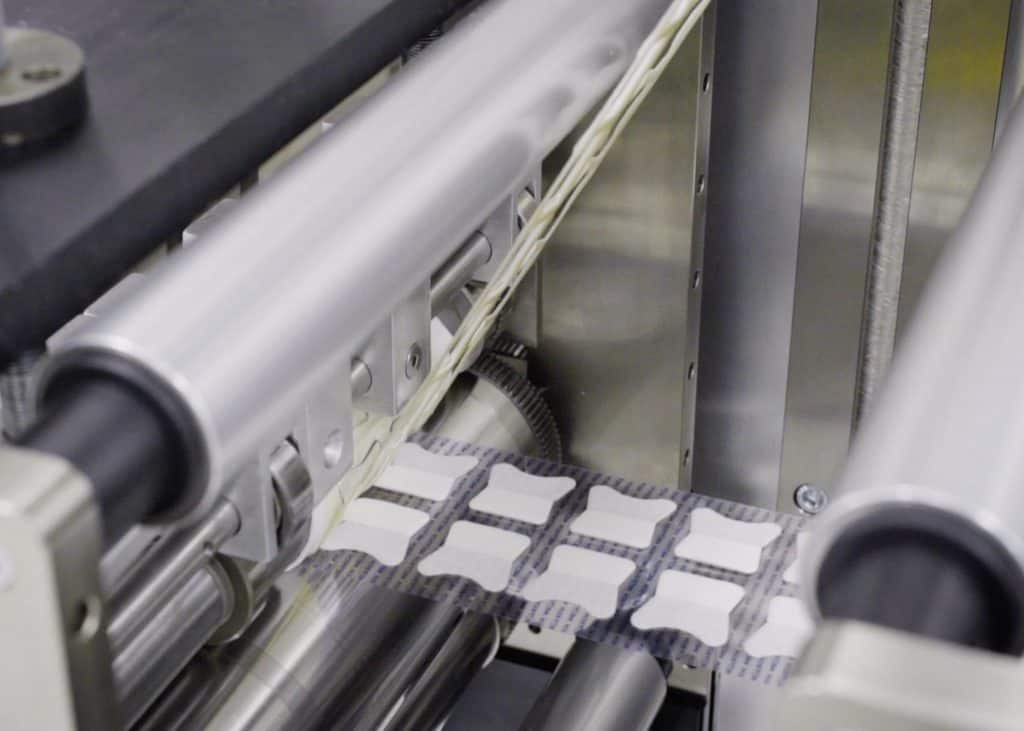
Packaging format
Once you’ve reached the end of the die-cutting process, the way your product is packaged will need to be considered and will affect the apparent cost.
Packaging your items individually (in pouches, or other packaging), or in bulk (rolls, boxes etc.) can affect the cost of production if additional specialised equipment or additional labour is required. It can also have a significant impact on the structure of your quote and the perceived and actual final Price Per Part. As you will also notice, larger order quantities will still have the greatest impact on reducing your Price Per Part estimate as larger runs are more cost-effective.
For example in the table below, the kit is cheaper than the bag, but the price per part (PPP) is 10 times cheaper for the bag than the kit. Always read your quote carefully and understand the pricing structure.
- NB: This is a costing example and not a PolarSeal Tapes & Conversions Ltd quote:
| Kit | Bag |
| Cost per kit: $50 | Cost per bag: $100 |
| Units in kit: 500 | Units in bag: 1000 |
| Cost of kits / units in kit = Price Per Part | Cost of kits / units in bag = Price Per Part |
| ($50 ) / (500) = PPP | ($100 ) / (1000) = PPP |
| PPP = $0.10 | PPP = $0.10 |
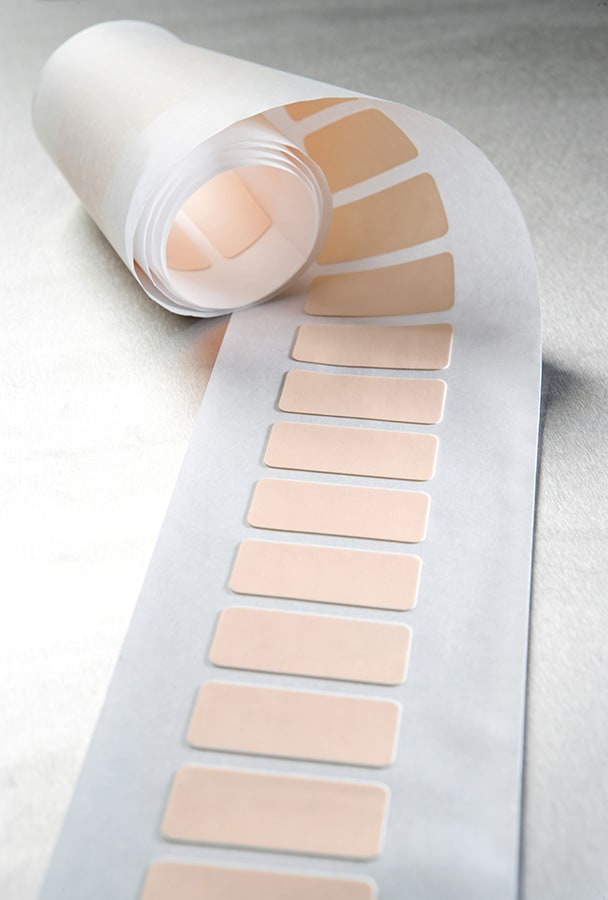
Final thoughts on the cost of die cutting in medical manufacturing
As you can see, providing a cost for die-cutting services is not a generic one-size fits all approach and is highly dependent on the specific material and product being produced. The material, complexity of cutting, the volume being produced, associated labour, and even the final packaging all play an important role.
By using the services of a leading and experienced converter you can, however, ensure that you minimise costs while maintaining product function and quality. At PolarSeal we optimise a variety of die cutting techniques and methods to suit your application and production volume.
Our research and development capabilities allow us to generate distinct value by improving solutions and finding innovative ways to reduce costs and streamline efficiency.
Contact us to discuss the requirements for your die cutting project. As one of the world’s best medical converting partners, we can provide expert insight into how to improve your product quality, and production efficiency, and achieve the tightest tolerances.
